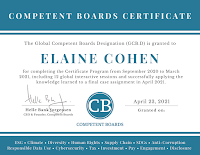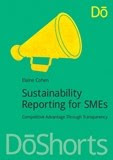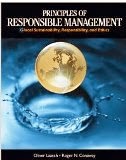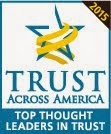Building on the obvious interest in G4, based on the fact that my post, The G4 Exposure Draft Explained, has become the most popular post ever! of the CSR Reporting Blog, with over 3,400 page views to date, I have decided to offer a more detailed review of the question of Application Levels, which if the G4 is approved as is, will fade away into reporting historical oblivion, never to be seen again.
The elimination of the A,B,C reporting levels system is controversial. One the one hand, there are obvious abuses of this aspect of the GRI Framework and it can be quite misleading. On the other hand, the competitive nature of what is perceived as a corporate sustainability ranking system may have galvanized organizations into higher levels of transparency and provided a roadmap for strategic sustainability performance development and reporting.
Much has already been blogged about Application Levels:
Rebecca Gunn, on the ACCSR blog, csrconnect.ed writes: "Most of us who have experience with the Guidelines agree that the existing Application Levels denoted as, “A, B, C” create a level of misrepresentation about the quality of the report or the level of performance of the organisation."
Robert Axelrod on the Fleishman-Hillard Sustainability Blog writes: “You don’t know what you’ve got till it’s gone.”, explaining that it's the Application Level A,B,C terminology that has created confusion and led to a tick-box mentality, and that a grading system of sorts would still be relevant. He adds: "Keep the Application Levels, but tweak them to reflect some of the great concepts found in G4."
A letter to the GRI from the German Institut der Wirtschaftspruefer addresses Application Levels saying that "Although we generally support this goal, we believe
that the “in accordance” approach might prevent SMEs and other small and medium
sized organisations from preparing a sustainability report according with
GRI guidelines."
Even before the G4 Exposure draft was published, Alexis Lindsay of the Briefing Note published a for-and-against for Application Levels, asking "who'd miss them if they were gone" and answering "no-one"!
I also posted on the hype of Application Levels and the way the coveted A or even A+ is abused for the purpose of making companies look good and reports look better than they are.
Feedback in the first GRI G4 Public Comment Period which asked for general input to the development of the G4 Exposure Draft contained some reference to Application Levels. Of the 691 individuals who responded to the question of how the Application Levels system could be improved:
- 89 respondents suggested that the naming of the Application Levels should be changed to remove the grade connotation that is generally linked to the letters A, B and C.
- 76 respondents were of the opinion that the current system works well and does not require any changes.
- 28 respondents said that fundamental changes were needed to the Application Level system and another 28 were of the opinion that GRI should get rid of it altogether.
- 25 respondents suggested that the number of levels should be increased and 16 suggested that a specific SME level should be added.
- 24 respondents were of the opinion that the Application Levels should be sector based.
This is a surprisingly small number of reactions to the Application Level system, and hardly a broad-based mandate for abandoning any form of differential application of the GRI Framework. Only 28 individuals suggested eliminating application levels and 76 said don't change anything. The GRI has now gathered in the feedback on the G4 Exposure Draft, and I suspect the Application Levels question will be one of the harder nuts to crack in the debate as to where the G4 final version will come out.
How many ladders? How many walls?
This debate is further complicated by the fact that G4 proposals promote reporting being tailored to material issues. Instead of being a one-size-fits-all framework as now, the new G4 option to select the most material issues and report only on those (what I am calling "material transparency") means that simply reporting on more stuff is no longer the target. Reporting on the right stuff is the new target. How can a differentiation system work when not everyone has their ladder up against the same wall? How do you assess the transparency and quality of a report when every company picks and chooses their own reference points? G4 does not prescribe a minimum, nor a maximum, number of material issues to report on. A company could select two material issues or thirty, making for a very different kind of report in either case. The GRI Sector Supplements, of which there are very few, having got lost in the general hubbub of GRI priorities, offers a partial response to materiality focus by sector. The new Sustainability Accounting Standards Board is taking the task of pre-defining material issues for a range of sectors into their own hands. But even so, material issues may be framed by sector-specific or geography-specific factors, but they can only ever be company-specific and time-bound to current issues that business strategy and stakeholder input determine. Back to square one. Sustainability Reporting of the future, according to G4, is a pick'n'mix job: "In Accordance" with general disclosures and "self-service" for material disclosures. The assumption may be that no-one wants to know more than the most important issues. But that's a big assumption.
There are three broad questions here:
- Is there a need for some form of differentiation to indicate different levels of application of the GRI Framework or should it be a simple yes or no (as proposed in the G4 "In Accordance" approach) ?
- If there is a need for differentiation, should A,B,C be replaced and if so, with what?
- How does the question of materiality fit with the need for differentiation? Should Sustainability Reporting be limited to "need-to-know" transparency?
The Need for Differentiation
Let's face it, we live in a competitive world. We make comparisons. We love rankings. We strive to be the best, the leader, the role model, the top of the list. Sustainability Reporting is no different. It's another arena where competition between companies plays out and another channel for companies to demonstrate their prowess. Unless our entire economic system changes, this is not going to change. Companies will look for every opportunity to stand out from the crowd and to show they are better than the rest, or at least, no worse than the worst. Sustainability Reporting cannot ignore this. Arguably, one of the drivers for the spread of sustainability reporting has been this very thirst for competitive leadership and recognition. Without the A, B, C Application Levels, the rise of Sustainability Reporting may have been unremarkable and perhaps even a little boring.
The challenge arises in the area of differentiation when you try to separate sustainability performance from sustainability reporting. While there is some correlation, you can perform on sustainability and report badly. Or vice versa. The GRI Reporting Framework is about the integrity and quality of reporting, and the level of transparency demonstrated, not about inherent sustainability performance, and this is where the A,B,C has often been abused to create the impression that the company performance is top grade rather than its reporting of it.
It's not the system, it's the practice, that's problematic
What purpose, beyond beating your peers, does this differentiation serve? It does have a purpose. It's shorthand for a degree of transparency which corresponds to the sustainability issues that are generally accepted to be the ones that stakeholders universally find to be important. It's a snapshot of what you can expect to find in the report. It's a promise that the report will contain certain levels of disclosure. It's almost like a brand. A means full transparency, no holes barred. B means getting there. C means boarding the train. If applied correctly, and all reports actually did deliver the promise, and communications about the different levels were clear and honest, then this may actually be a good system. Those companies which raise the bar create a new standard for other companies to aspire to. This could continue to create momentum for reporting.
The problem is in the practice. The minute you define the groundrules, companies start to cut the corners to get more marketing traction and recognition for less work. Rather than using the Application Levels system as a driver for improved performance and reporting, it has been used primarily as a marketing tool with convenient workarounds for less convenient disclosures.
The G4 proposal has responded to the problems of Application Levels by deleting them. That's hardly a creative approach. Instead, the GRI G4 proposes the "In Accordance" threshold which requires all companies to do G4 or not, enabling only one aspect of differentiation. To be or not to be G4. I think this fails to respond to a market-driven need for broader differentiation, which I believe is a legitimate need for companies in competitive markets.
What to differentiate?
Should differentiation be around the level of transparency of the report? Or should differentiation adopt some other quality parameters? The "+" which has been used to indicate differentiation through assurance is not addressed in G4. There is no "In Accordance + " and assurance is not part of the minimum G4 threshold. There doesn't really seem to be any other basis for differentiation without getting into complications of how to compare report content. Differentiation on the basis, then, of transparency seems to be the only way to go. Transparency is a catalyst for performance improvement. Companies which report on material issues and disclose on other issues can gain some advantage, as certain stakeholders are interested in issues other than only those deemed most material, and companies can create value and opportunity from addressing issues which may not have hit the top of the materiality radar screen. Sometimes, public disclosure is what drives internal commitment and progress. Materiality, therefore, in G4, could be a minimum, not a maximum.
An option for not throwing the baby out with the bathwater
Accepting a greater need for differentiation might lead us to consider another option, which would first require lowering the "In Accordance" threshold to enable wider participation in G4 by all kinds of companies, including the smaller businesses. After all, GRI's mission is to increase the number and quality of reports published. Too high an "In Accordance" threshold will undoubtedly discourage small, new and possibly existing reporters. A lower "In Accordance" threshold should include a core set of disclosures and performance indicators that are truly universal and top priority. Something close to the current C level report of today, with about 25 predefined performance indicators. Beyond this, differentiation can happen. But how?
One option might be to use a percentage system. If the G4 has 73 Profile Disclosures, 44 Material Disclosure Aspects and 95 Performance Indicators, there could be a Percent Reported approach, which would include all the disclosures mandated by the lower "In Accordance" threshold. This could look something like this:
- Company A: 132 of a total of 212 disclosures reported = 62% reported
- Company B: 198 of a total of 212 disclosures reported = 93% reported
- Company C: 107 of a total of 212 disclosures reported = 51% reported
Which company is the most transparent? Company B. Could this be confused with the quality of the company or its performance? Unlikely. It's a factual, not judgmental, grade. The problem here is that all disclosures carry equal percentage weight - though some are unquestionably more important than others. This could be addressed by the lower "In Accordance" threshold and its requirement for the minimum Percent Reported to include some of each of the different types of disclosure.
Minimum Materiality
This still does not address the issue of materiality. Reporting more stuff is not what G4 claims to be about. If transparency were the only common denominator, this system could work well. How do you factor in the materiality aspect into the differentiation system, when there is no prescriptive guidance for how many material issues to disclose? My response is this: G4 should prescribe that each company select a minimum of five most material issues to be reported on, and this should be part of the "In Accordance" minimum threshold. There is no company that has less than 5 material issues. Companies that wish to go for "Maximum Materiality" can still do so and gain points in the transparency league table.
Wrapping it Up
Thinking about Application Levels, Materiality, Transparency and Differentiation, I am led to conclude that G4 should offer a lower but different "In Accordance" threshold which is relevant for every company everywhere, in order to maintain the Sustainability Reporting momentum for all companies. I conclude that differentiation is a good thing and a differentiation mechanism should be available for companies who can and wish to disclose more than minimum, for various internally or externally driven reasons, leveraging it for competitive advantage while establishing new standards that other companies may follow. The Go-No-Go G4 proposal is unimaginative in this respect and could become a blocker for more and better reporting in the future. The option proposed here is just one suggestion. I am sure there are other possibilities, probably better ones.
Place your Bets
As the GRI Governing Bodies battle this out between now and the May 2013 launch of G4, we can try a little poll of our own. Click to vote.
elaine cohen, CSR consultant, winning (CRRA'12) Sustainability Reporter, HR Professional, Ice Cream Addict. Author of CSR for HR: A necessary partnership for advancing responsible business practices Contact me via www.twitter.com/elainecohen on Twitter or via my business website www.b-yond.biz (Beyond Business Ltd, an inspired CSR consulting and Sustainability Reporting firm)




















2 comments:
I'm so sorry I haven't taken the time to complete my GRI G4 feed-back questionnaire.
Because I simply don't understand the issue of "tick-box mentality".
1. The current GRI G3.1 has enough quality and strategy disclosures, not only quantitative "checkboxes". The REAL problem is that the majority of A reporters don't respect them and there is no checklist to demonstrate they are doing a poor job.
2. "Tick-box mentality" is not bad at all, as the majority of big companies still don't report. Those companies need first checkboxes, in order to develop their management systems. And they need to respond to a standard set of questions, not only the ones they choose. On the other hand, we all need them to complete the checkboxes, because otherwise we cannot have real benchmarks, we cannot know where we stand and what sould really be done.
It makes no sense to me to look at the problem of some handful of A reporters that don't have quality and are only completing checkboxes, and don't look at the huge problem of non-reporters that need to be encouraged to get into some clear line.
For these non-reporters, I belive, the "self-determined materiality" focus will have 2 possible effects: 1) give them an excuse to do their own PR brochures and call them reports or 2) convincing them that reporting is a real rocket science which not worth being "alligned" with their main business activity.
Anyways, very good argumentation, Elaine. I'm afraid that once the current version of G4 will be approved, it will be hard to praise GRI reporting in some places (for example Romania).
So does G4's ideals really serve the scope of having a greater number of transparent companies? Or is something else?...
Post a Comment